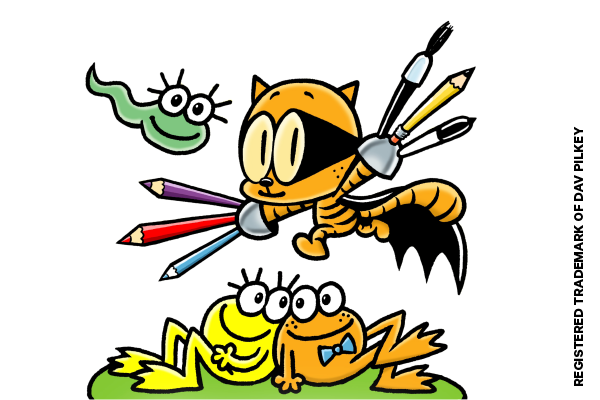Content Guidance Draft
At Seattle Children’s Theatre, we value the feedback from our audience. It is essential to our nearly 50-year commitment to artistic expression and community engagement. We are proud to make art for and with our community. With every production, SCT carefully considers a myriad of factors and consults educators and other experts about how to discuss and share our art. But ultimately, we can never accurately predict exactly how our audiences, who range in age and experience, will receive the productions.
For quick access to specific shows, follow the links below:
Cat Kid Comic Club: The Musical
Havana Hop
SCT's The Snow Queen
The Girl Who Swallowed a Cactus
The Hula Hoopin' Queen
Aesop's Fantastic Family Fables
The Pa'akai We Bring
24-25 Season
Cat Kid Comic Club: The Musical
Lorem ipsum dolor sit amet, consectetur adipiscing elit, sed do eiusmod tempor incididunt ut labore et dolore magna aliqua. Ut enim ad minim veniam, quis nostrud exercitation ullamco laboris nisi ut aliquip ex ea commodo consequat. Duis aute irure dolor in reprehenderit in voluptate velit esse cillum dolore eu fugiat nulla pariatur.
in depth information about Cat Kid Comic Club: The Musical
Cat Kid Comic Club: The Musical is a lively, interactive production designed for children and families. The story explores themes of creativity, self-expression, and overcoming fears, all while maintaining a playful and humorous tone. The frogs’ comics include imaginative scenarios that range from silly to mischievous, to slightly macabre, always resolved in a positive and constructive manner. The play features elements of sibling rivalry and playful conflict.
CENSORSHIP
Censorship is just a big word for telling someone what they can and cannot say or do. In Cat Kid Comic Club: The Musical, Flippy tries to control what the kids write, making the kids feel like they cannot express who they really are in their comics. Flippy learns that he cannot write the kids’ story, and it’s better to let the kids find their own voices. It teaches us that allowing kids to express themselves and to be true to who they are is the best way to support them.
MENTORSHIP
Mentors are kind of like teachers. They teach us new things and cheer us on when we need support. The coolest part is anyone can be a mentor! Being a good mentor is not just about teaching, it is also about being there when someone needs you. In Cat Kid Comic Club: The Musical, Flippy learns that instead of trying to make the kids just like him, it is better to give them the tools they need to discover themselves.
POWER OF IMAGINATION
Inside all of us we have a seed of imagination. The seed is always there but without water it cannot grow. Cat Kid Comic Club: The Musical reminds us that imagination is worth watering and growing. The Cat Kid Comic Club is a space for the characters to grow their imagination from a seed into a beautiful flower and reminds us to take care of our own seed, water it and be proud of the beautiful flower of imagination we all have inside.
TOGETHERNESS _ COMMUNITIES CREATING TOGETHER
Cat Kid Comic Club: The Musical shows us how working together can make us closer. Most of the characters write their comics alone, but the whole club always presents them together for their audience. By working together, the kids find community with each other and become closer as a club. Watching the play, we learn that the power of making things together brings people closer, and stronger.
The play includes mild “gross out” language, such as “butt,” “poop,” and “boogers,” along with some lighthearted teasing and playful humor. There are also instances of schoolyard insults and ableist terms.
None
Cat Kid Comic Club: The Musical has moments of loud music, moving lights, and brief flashing lights. Audience responses or reactions can be noisy and potentially intense for some audience members. Reflections from a disco ball shine across the audience.
For additional notes, see our Sensory Guide available below.
The play begins with Cat Kid and Molly Pollywog introducing the audience to the chaotic world of their new club, where they aim to teach 21 baby frogs how to create their own comics. Each frog is bursting with energy, and Cat Kid promises that by the end of the week, everyone will have created a comic, with the reward of a “Mega-Gigantic, Humonga-normous Comic Club Party” awaiting their success.
As the frogs begin their creative journey, they struggle with self-doubt and fear of failure. The club’s first project, “Dennis the Toothbrush Lawyer for Dinosaurs,” is a collaborative effort that showcases the frogs’ wild imaginations. However, sibling rivalry flares up as Naomi and Melvin clash over their differing interests, leading to playful conflict and a series of comic creations that range from absurdly funny to slightly macabre, such as “Supa Fail!” and “The Cute, Little, Fluffy Cloud of Death.”
Despite these creative outbursts, Flippy, the frogs’ father, grows increasingly concerned about the content of the comics, particularly the recurring themes of destruction and dark humor. Tensions rise when Flippy imposes a rule that all comics must be “decent, wholesome, and with good moral values,” prompting a rebellion among the frogs. This conflict highlights the show’s exploration of creative freedom versus imposed restrictions.
As the week progresses, the frogs begin to find their unique voices. Starla, a shy frog, is encouraged to create a comic in haiku form, embracing her love for the Japanese art form. The final day brings a touching moment of reconciliation between Naomi and Melvin, as Melvin creates a comic from Naomi’s perspective, leading to a newfound understanding and respect between the siblings.
The play culminates in the much-anticipated Comic Club Party, where each frog presents their completed comic, celebrating the power of creativity, individuality, and the importance of embracing one’s unique talents. The story closes with the message that true creativity flourishes when fear of failure is overcome and self-expression is celebrated.
For a scene by scene breakdown, please see our Full Synopsis.
Havana Hop
Lorem ipsum dolor sit amet, consectetur adipiscing elit, sed do eiusmod tempor incididunt ut labore et dolore magna aliqua. Ut enim ad minim veniam, quis nostrud exercitation ullamco laboris nisi ut aliquip ex ea commodo consequat. Duis aute irure dolor in reprehenderit in voluptate velit esse cillum dolore eu fugiat nulla pariatur.

in depth information about HAvana Hop
Cat Kid Comic Club: The Musical is a lively, interactive production designed for children and families. The story explores themes of creativity, self-expression, and overcoming fears, all while maintaining a playful and humorous tone. The frogs’ comics include imaginative scenarios that range from silly to mischievous, to slightly macabre, always resolved in a positive and constructive manner. The play features elements of sibling rivalry and playful conflict.
CENSORSHIP
Censorship is just a big word for telling someone what they can and cannot say or do. In Cat Kid Comic Club: The Musical, Flippy tries to control what the kids write, making the kids feel like they cannot express who they really are in their comics. Flippy learns that he cannot write the kids’ story, and it’s better to let the kids find their own voices. It teaches us that allowing kids to express themselves and to be true to who they are is the best way to support them.
MENTORSHIP
Mentors are kind of like teachers. They teach us new things and cheer us on when we need support. The coolest part is anyone can be a mentor! Being a good mentor is not just about teaching, it is also about being there when someone needs you. In Cat Kid Comic Club: The Musical, Flippy learns that instead of trying to make the kids just like him, it is better to give them the tools they need to discover themselves.
POWER OF IMAGINATION
Inside all of us we have a seed of imagination. The seed is always there but without water it cannot grow. Cat Kid Comic Club: The Musical reminds us that imagination is worth watering and growing. The Cat Kid Comic Club is a space for the characters to grow their imagination from a seed into a beautiful flower and reminds us to take care of our own seed, water it and be proud of the beautiful flower of imagination we all have inside.
TOGETHERNESS _ COMMUNITIES CREATING TOGETHER
Cat Kid Comic Club: The Musical shows us how working together can make us closer. Most of the characters write their comics alone, but the whole club always presents them together for their audience. By working together, the kids find community with each other and become closer as a club. Watching the play, we learn that the power of making things together brings people closer, and stronger.
The play includes mild “gross out” language, such as “butt,” “poop,” and “boogers,” along with some lighthearted teasing and playful humor. There are also instances of schoolyard insults and ableist terms.
None
Cat Kid Comic Club: The Musical has moments of loud music, moving lights, and brief flashing lights. Audience responses or reactions can be noisy and potentially intense for some audience members. Reflections from a disco ball shine across the audience.
For additional notes, see our Sensory Guide available below.
The play begins with Cat Kid and Molly Pollywog introducing the audience to the chaotic world of their new club, where they aim to teach 21 baby frogs how to create their own comics. Each frog is bursting with energy, and Cat Kid promises that by the end of the week, everyone will have created a comic, with the reward of a “Mega-Gigantic, Humonga-normous Comic Club Party” awaiting their success.
As the frogs begin their creative journey, they struggle with self-doubt and fear of failure. The club’s first project, “Dennis the Toothbrush Lawyer for Dinosaurs,” is a collaborative effort that showcases the frogs’ wild imaginations. However, sibling rivalry flares up as Naomi and Melvin clash over their differing interests, leading to playful conflict and a series of comic creations that range from absurdly funny to slightly macabre, such as “Supa Fail!” and “The Cute, Little, Fluffy Cloud of Death.”
Despite these creative outbursts, Flippy, the frogs’ father, grows increasingly concerned about the content of the comics, particularly the recurring themes of destruction and dark humor. Tensions rise when Flippy imposes a rule that all comics must be “decent, wholesome, and with good moral values,” prompting a rebellion among the frogs. This conflict highlights the show’s exploration of creative freedom versus imposed restrictions.
As the week progresses, the frogs begin to find their unique voices. Starla, a shy frog, is encouraged to create a comic in haiku form, embracing her love for the Japanese art form. The final day brings a touching moment of reconciliation between Naomi and Melvin, as Melvin creates a comic from Naomi’s perspective, leading to a newfound understanding and respect between the siblings.
The play culminates in the much-anticipated Comic Club Party, where each frog presents their completed comic, celebrating the power of creativity, individuality, and the importance of embracing one’s unique talents. The story closes with the message that true creativity flourishes when fear of failure is overcome and self-expression is celebrated.
For a scene by scene breakdown, please see our Full Synopsis.
SCT's The Snow Queen
Lorem ipsum dolor sit amet, consectetur adipiscing elit, sed do eiusmod tempor incididunt ut labore et dolore magna aliqua. Ut enim ad minim veniam, quis nostrud exercitation ullamco laboris nisi ut aliquip ex ea commodo consequat. Duis aute irure dolor in reprehenderit in voluptate velit esse cillum dolore eu fugiat nulla pariatur.
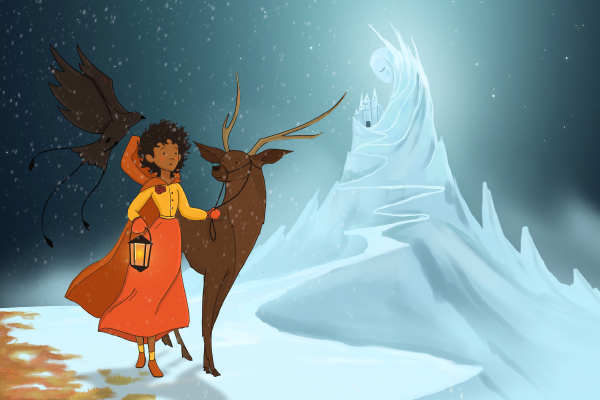
in depth information about SCT's The Snow Queen
Cat Kid Comic Club: The Musical is a lively, interactive production designed for children and families. The story explores themes of creativity, self-expression, and overcoming fears, all while maintaining a playful and humorous tone. The frogs’ comics include imaginative scenarios that range from silly to mischievous, to slightly macabre, always resolved in a positive and constructive manner. The play features elements of sibling rivalry and playful conflict.
CENSORSHIP
Censorship is just a big word for telling someone what they can and cannot say or do. In Cat Kid Comic Club: The Musical, Flippy tries to control what the kids write, making the kids feel like they cannot express who they really are in their comics. Flippy learns that he cannot write the kids’ story, and it’s better to let the kids find their own voices. It teaches us that allowing kids to express themselves and to be true to who they are is the best way to support them.
MENTORSHIP
Mentors are kind of like teachers. They teach us new things and cheer us on when we need support. The coolest part is anyone can be a mentor! Being a good mentor is not just about teaching, it is also about being there when someone needs you. In Cat Kid Comic Club: The Musical, Flippy learns that instead of trying to make the kids just like him, it is better to give them the tools they need to discover themselves.
POWER OF IMAGINATION
Inside all of us we have a seed of imagination. The seed is always there but without water it cannot grow. Cat Kid Comic Club: The Musical reminds us that imagination is worth watering and growing. The Cat Kid Comic Club is a space for the characters to grow their imagination from a seed into a beautiful flower and reminds us to take care of our own seed, water it and be proud of the beautiful flower of imagination we all have inside.
TOGETHERNESS _ COMMUNITIES CREATING TOGETHER
Cat Kid Comic Club: The Musical shows us how working together can make us closer. Most of the characters write their comics alone, but the whole club always presents them together for their audience. By working together, the kids find community with each other and become closer as a club. Watching the play, we learn that the power of making things together brings people closer, and stronger.
The play includes mild “gross out” language, such as “butt,” “poop,” and “boogers,” along with some lighthearted teasing and playful humor. There are also instances of schoolyard insults and ableist terms.
None
Cat Kid Comic Club: The Musical has moments of loud music, moving lights, and brief flashing lights. Audience responses or reactions can be noisy and potentially intense for some audience members. Reflections from a disco ball shine across the audience.
For additional notes, see our Sensory Guide available below.
The play begins with Cat Kid and Molly Pollywog introducing the audience to the chaotic world of their new club, where they aim to teach 21 baby frogs how to create their own comics. Each frog is bursting with energy, and Cat Kid promises that by the end of the week, everyone will have created a comic, with the reward of a “Mega-Gigantic, Humonga-normous Comic Club Party” awaiting their success.
As the frogs begin their creative journey, they struggle with self-doubt and fear of failure. The club’s first project, “Dennis the Toothbrush Lawyer for Dinosaurs,” is a collaborative effort that showcases the frogs’ wild imaginations. However, sibling rivalry flares up as Naomi and Melvin clash over their differing interests, leading to playful conflict and a series of comic creations that range from absurdly funny to slightly macabre, such as “Supa Fail!” and “The Cute, Little, Fluffy Cloud of Death.”
Despite these creative outbursts, Flippy, the frogs’ father, grows increasingly concerned about the content of the comics, particularly the recurring themes of destruction and dark humor. Tensions rise when Flippy imposes a rule that all comics must be “decent, wholesome, and with good moral values,” prompting a rebellion among the frogs. This conflict highlights the show’s exploration of creative freedom versus imposed restrictions.
As the week progresses, the frogs begin to find their unique voices. Starla, a shy frog, is encouraged to create a comic in haiku form, embracing her love for the Japanese art form. The final day brings a touching moment of reconciliation between Naomi and Melvin, as Melvin creates a comic from Naomi’s perspective, leading to a newfound understanding and respect between the siblings.
The play culminates in the much-anticipated Comic Club Party, where each frog presents their completed comic, celebrating the power of creativity, individuality, and the importance of embracing one’s unique talents. The story closes with the message that true creativity flourishes when fear of failure is overcome and self-expression is celebrated.
For a scene by scene breakdown, please see our Full Synopsis.
The Girl Who Swallowed a Cactus
Lorem ipsum dolor sit amet, consectetur adipiscing elit, sed do eiusmod tempor incididunt ut labore et dolore magna aliqua. Ut enim ad minim veniam, quis nostrud exercitation ullamco laboris nisi ut aliquip ex ea commodo consequat. Duis aute irure dolor in reprehenderit in voluptate velit esse cillum dolore eu fugiat nulla pariatur.
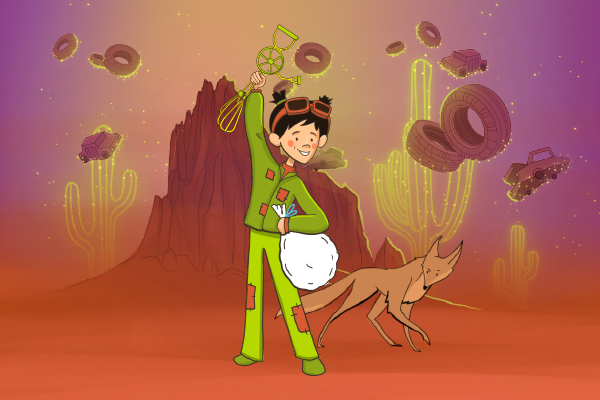
in depth information about The GIrl Who Swallowed a Cactus
Cat Kid Comic Club: The Musical is a lively, interactive production designed for children and families. The story explores themes of creativity, self-expression, and overcoming fears, all while maintaining a playful and humorous tone. The frogs’ comics include imaginative scenarios that range from silly to mischievous, to slightly macabre, always resolved in a positive and constructive manner. The play features elements of sibling rivalry and playful conflict.
CENSORSHIP
Censorship is just a big word for telling someone what they can and cannot say or do. In Cat Kid Comic Club: The Musical, Flippy tries to control what the kids write, making the kids feel like they cannot express who they really are in their comics. Flippy learns that he cannot write the kids’ story, and it’s better to let the kids find their own voices. It teaches us that allowing kids to express themselves and to be true to who they are is the best way to support them.
MENTORSHIP
Mentors are kind of like teachers. They teach us new things and cheer us on when we need support. The coolest part is anyone can be a mentor! Being a good mentor is not just about teaching, it is also about being there when someone needs you. In Cat Kid Comic Club: The Musical, Flippy learns that instead of trying to make the kids just like him, it is better to give them the tools they need to discover themselves.
POWER OF IMAGINATION
Inside all of us we have a seed of imagination. The seed is always there but without water it cannot grow. Cat Kid Comic Club: The Musical reminds us that imagination is worth watering and growing. The Cat Kid Comic Club is a space for the characters to grow their imagination from a seed into a beautiful flower and reminds us to take care of our own seed, water it and be proud of the beautiful flower of imagination we all have inside.
TOGETHERNESS _ COMMUNITIES CREATING TOGETHER
Cat Kid Comic Club: The Musical shows us how working together can make us closer. Most of the characters write their comics alone, but the whole club always presents them together for their audience. By working together, the kids find community with each other and become closer as a club. Watching the play, we learn that the power of making things together brings people closer, and stronger.
The play includes mild “gross out” language, such as “butt,” “poop,” and “boogers,” along with some lighthearted teasing and playful humor. There are also instances of schoolyard insults and ableist terms.
None
Cat Kid Comic Club: The Musical has moments of loud music, moving lights, and brief flashing lights. Audience responses or reactions can be noisy and potentially intense for some audience members. Reflections from a disco ball shine across the audience.
For additional notes, see our Sensory Guide available below.
The play begins with Cat Kid and Molly Pollywog introducing the audience to the chaotic world of their new club, where they aim to teach 21 baby frogs how to create their own comics. Each frog is bursting with energy, and Cat Kid promises that by the end of the week, everyone will have created a comic, with the reward of a “Mega-Gigantic, Humonga-normous Comic Club Party” awaiting their success.
As the frogs begin their creative journey, they struggle with self-doubt and fear of failure. The club’s first project, “Dennis the Toothbrush Lawyer for Dinosaurs,” is a collaborative effort that showcases the frogs’ wild imaginations. However, sibling rivalry flares up as Naomi and Melvin clash over their differing interests, leading to playful conflict and a series of comic creations that range from absurdly funny to slightly macabre, such as “Supa Fail!” and “The Cute, Little, Fluffy Cloud of Death.”
Despite these creative outbursts, Flippy, the frogs’ father, grows increasingly concerned about the content of the comics, particularly the recurring themes of destruction and dark humor. Tensions rise when Flippy imposes a rule that all comics must be “decent, wholesome, and with good moral values,” prompting a rebellion among the frogs. This conflict highlights the show’s exploration of creative freedom versus imposed restrictions.
As the week progresses, the frogs begin to find their unique voices. Starla, a shy frog, is encouraged to create a comic in haiku form, embracing her love for the Japanese art form. The final day brings a touching moment of reconciliation between Naomi and Melvin, as Melvin creates a comic from Naomi’s perspective, leading to a newfound understanding and respect between the siblings.
The play culminates in the much-anticipated Comic Club Party, where each frog presents their completed comic, celebrating the power of creativity, individuality, and the importance of embracing one’s unique talents. The story closes with the message that true creativity flourishes when fear of failure is overcome and self-expression is celebrated.
For a scene by scene breakdown, please see our Full Synopsis.
The Hula Hoopin' Queen
Lorem ipsum dolor sit amet, consectetur adipiscing elit, sed do eiusmod tempor incididunt ut labore et dolore magna aliqua. Ut enim ad minim veniam, quis nostrud exercitation ullamco laboris nisi ut aliquip ex ea commodo consequat. Duis aute irure dolor in reprehenderit in voluptate velit esse cillum dolore eu fugiat nulla pariatur.
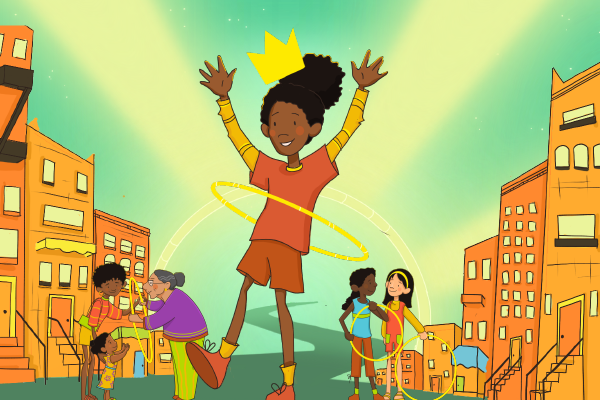
in depth information about The Hula Hoopin' Queen
Cat Kid Comic Club: The Musical is a lively, interactive production designed for children and families. The story explores themes of creativity, self-expression, and overcoming fears, all while maintaining a playful and humorous tone. The frogs’ comics include imaginative scenarios that range from silly to mischievous, to slightly macabre, always resolved in a positive and constructive manner. The play features elements of sibling rivalry and playful conflict.
CENSORSHIP
Censorship is just a big word for telling someone what they can and cannot say or do. In Cat Kid Comic Club: The Musical, Flippy tries to control what the kids write, making the kids feel like they cannot express who they really are in their comics. Flippy learns that he cannot write the kids’ story, and it’s better to let the kids find their own voices. It teaches us that allowing kids to express themselves and to be true to who they are is the best way to support them.
MENTORSHIP
Mentors are kind of like teachers. They teach us new things and cheer us on when we need support. The coolest part is anyone can be a mentor! Being a good mentor is not just about teaching, it is also about being there when someone needs you. In Cat Kid Comic Club: The Musical, Flippy learns that instead of trying to make the kids just like him, it is better to give them the tools they need to discover themselves.
POWER OF IMAGINATION
Inside all of us we have a seed of imagination. The seed is always there but without water it cannot grow. Cat Kid Comic Club: The Musical reminds us that imagination is worth watering and growing. The Cat Kid Comic Club is a space for the characters to grow their imagination from a seed into a beautiful flower and reminds us to take care of our own seed, water it and be proud of the beautiful flower of imagination we all have inside.
TOGETHERNESS _ COMMUNITIES CREATING TOGETHER
Cat Kid Comic Club: The Musical shows us how working together can make us closer. Most of the characters write their comics alone, but the whole club always presents them together for their audience. By working together, the kids find community with each other and become closer as a club. Watching the play, we learn that the power of making things together brings people closer, and stronger.
The play includes mild “gross out” language, such as “butt,” “poop,” and “boogers,” along with some lighthearted teasing and playful humor. There are also instances of schoolyard insults and ableist terms.
None
Cat Kid Comic Club: The Musical has moments of loud music, moving lights, and brief flashing lights. Audience responses or reactions can be noisy and potentially intense for some audience members. Reflections from a disco ball shine across the audience.
For additional notes, see our Sensory Guide available below.
The play begins with Cat Kid and Molly Pollywog introducing the audience to the chaotic world of their new club, where they aim to teach 21 baby frogs how to create their own comics. Each frog is bursting with energy, and Cat Kid promises that by the end of the week, everyone will have created a comic, with the reward of a “Mega-Gigantic, Humonga-normous Comic Club Party” awaiting their success.
As the frogs begin their creative journey, they struggle with self-doubt and fear of failure. The club’s first project, “Dennis the Toothbrush Lawyer for Dinosaurs,” is a collaborative effort that showcases the frogs’ wild imaginations. However, sibling rivalry flares up as Naomi and Melvin clash over their differing interests, leading to playful conflict and a series of comic creations that range from absurdly funny to slightly macabre, such as “Supa Fail!” and “The Cute, Little, Fluffy Cloud of Death.”
Despite these creative outbursts, Flippy, the frogs’ father, grows increasingly concerned about the content of the comics, particularly the recurring themes of destruction and dark humor. Tensions rise when Flippy imposes a rule that all comics must be “decent, wholesome, and with good moral values,” prompting a rebellion among the frogs. This conflict highlights the show’s exploration of creative freedom versus imposed restrictions.
As the week progresses, the frogs begin to find their unique voices. Starla, a shy frog, is encouraged to create a comic in haiku form, embracing her love for the Japanese art form. The final day brings a touching moment of reconciliation between Naomi and Melvin, as Melvin creates a comic from Naomi’s perspective, leading to a newfound understanding and respect between the siblings.
The play culminates in the much-anticipated Comic Club Party, where each frog presents their completed comic, celebrating the power of creativity, individuality, and the importance of embracing one’s unique talents. The story closes with the message that true creativity flourishes when fear of failure is overcome and self-expression is celebrated.
For a scene by scene breakdown, please see our Full Synopsis.
Aesop's Fantastic Family Fables
Lorem ipsum dolor sit amet, consectetur adipiscing elit, sed do eiusmod tempor incididunt ut labore et dolore magna aliqua. Ut enim ad minim veniam, quis nostrud exercitation ullamco laboris nisi ut aliquip ex ea commodo consequat. Duis aute irure dolor in reprehenderit in voluptate velit esse cillum dolore eu fugiat nulla pariatur.
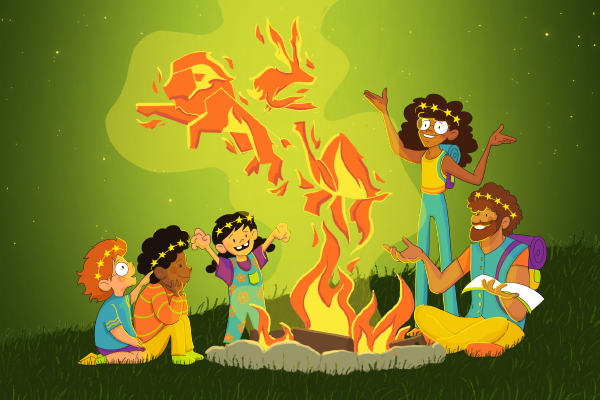
in depth information about Aesop's Fantastic Family Fables
Cat Kid Comic Club: The Musical is a lively, interactive production designed for children and families. The story explores themes of creativity, self-expression, and overcoming fears, all while maintaining a playful and humorous tone. The frogs’ comics include imaginative scenarios that range from silly to mischievous, to slightly macabre, always resolved in a positive and constructive manner. The play features elements of sibling rivalry and playful conflict.
CENSORSHIP
Censorship is just a big word for telling someone what they can and cannot say or do. In Cat Kid Comic Club: The Musical, Flippy tries to control what the kids write, making the kids feel like they cannot express who they really are in their comics. Flippy learns that he cannot write the kids’ story, and it’s better to let the kids find their own voices. It teaches us that allowing kids to express themselves and to be true to who they are is the best way to support them.
MENTORSHIP
Mentors are kind of like teachers. They teach us new things and cheer us on when we need support. The coolest part is anyone can be a mentor! Being a good mentor is not just about teaching, it is also about being there when someone needs you. In Cat Kid Comic Club: The Musical, Flippy learns that instead of trying to make the kids just like him, it is better to give them the tools they need to discover themselves.
POWER OF IMAGINATION
Inside all of us we have a seed of imagination. The seed is always there but without water it cannot grow. Cat Kid Comic Club: The Musical reminds us that imagination is worth watering and growing. The Cat Kid Comic Club is a space for the characters to grow their imagination from a seed into a beautiful flower and reminds us to take care of our own seed, water it and be proud of the beautiful flower of imagination we all have inside.
TOGETHERNESS _ COMMUNITIES CREATING TOGETHER
Cat Kid Comic Club: The Musical shows us how working together can make us closer. Most of the characters write their comics alone, but the whole club always presents them together for their audience. By working together, the kids find community with each other and become closer as a club. Watching the play, we learn that the power of making things together brings people closer, and stronger.
The play includes mild “gross out” language, such as “butt,” “poop,” and “boogers,” along with some lighthearted teasing and playful humor. There are also instances of schoolyard insults and ableist terms.
None
Cat Kid Comic Club: The Musical has moments of loud music, moving lights, and brief flashing lights. Audience responses or reactions can be noisy and potentially intense for some audience members. Reflections from a disco ball shine across the audience.
For additional notes, see our Sensory Guide available below.
The play begins with Cat Kid and Molly Pollywog introducing the audience to the chaotic world of their new club, where they aim to teach 21 baby frogs how to create their own comics. Each frog is bursting with energy, and Cat Kid promises that by the end of the week, everyone will have created a comic, with the reward of a “Mega-Gigantic, Humonga-normous Comic Club Party” awaiting their success.
As the frogs begin their creative journey, they struggle with self-doubt and fear of failure. The club’s first project, “Dennis the Toothbrush Lawyer for Dinosaurs,” is a collaborative effort that showcases the frogs’ wild imaginations. However, sibling rivalry flares up as Naomi and Melvin clash over their differing interests, leading to playful conflict and a series of comic creations that range from absurdly funny to slightly macabre, such as “Supa Fail!” and “The Cute, Little, Fluffy Cloud of Death.”
Despite these creative outbursts, Flippy, the frogs’ father, grows increasingly concerned about the content of the comics, particularly the recurring themes of destruction and dark humor. Tensions rise when Flippy imposes a rule that all comics must be “decent, wholesome, and with good moral values,” prompting a rebellion among the frogs. This conflict highlights the show’s exploration of creative freedom versus imposed restrictions.
As the week progresses, the frogs begin to find their unique voices. Starla, a shy frog, is encouraged to create a comic in haiku form, embracing her love for the Japanese art form. The final day brings a touching moment of reconciliation between Naomi and Melvin, as Melvin creates a comic from Naomi’s perspective, leading to a newfound understanding and respect between the siblings.
The play culminates in the much-anticipated Comic Club Party, where each frog presents their completed comic, celebrating the power of creativity, individuality, and the importance of embracing one’s unique talents. The story closes with the message that true creativity flourishes when fear of failure is overcome and self-expression is celebrated.
For a scene by scene breakdown, please see our Full Synopsis.
The Pa'akai We Bring
Lorem ipsum dolor sit amet, consectetur adipiscing elit, sed do eiusmod tempor incididunt ut labore et dolore magna aliqua. Ut enim ad minim veniam, quis nostrud exercitation ullamco laboris nisi ut aliquip ex ea commodo consequat. Duis aute irure dolor in reprehenderit in voluptate velit esse cillum dolore eu fugiat nulla pariatur.
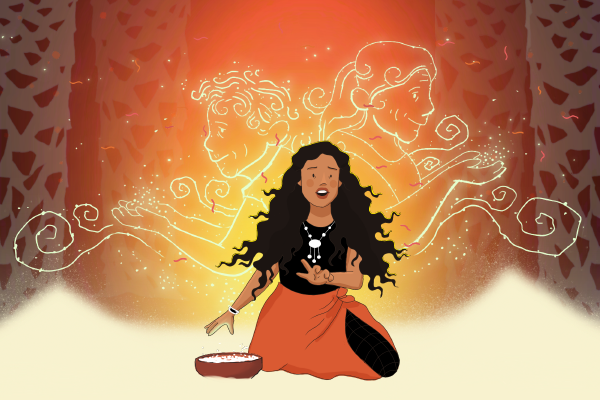
in depth information about The Pa'akai We Bring
Cat Kid Comic Club: The Musical is a lively, interactive production designed for children and families. The story explores themes of creativity, self-expression, and overcoming fears, all while maintaining a playful and humorous tone. The frogs’ comics include imaginative scenarios that range from silly to mischievous, to slightly macabre, always resolved in a positive and constructive manner. The play features elements of sibling rivalry and playful conflict.
CENSORSHIP
Censorship is just a big word for telling someone what they can and cannot say or do. In Cat Kid Comic Club: The Musical, Flippy tries to control what the kids write, making the kids feel like they cannot express who they really are in their comics. Flippy learns that he cannot write the kids’ story, and it’s better to let the kids find their own voices. It teaches us that allowing kids to express themselves and to be true to who they are is the best way to support them.
MENTORSHIP
Mentors are kind of like teachers. They teach us new things and cheer us on when we need support. The coolest part is anyone can be a mentor! Being a good mentor is not just about teaching, it is also about being there when someone needs you. In Cat Kid Comic Club: The Musical, Flippy learns that instead of trying to make the kids just like him, it is better to give them the tools they need to discover themselves.
POWER OF IMAGINATION
Inside all of us we have a seed of imagination. The seed is always there but without water it cannot grow. Cat Kid Comic Club: The Musical reminds us that imagination is worth watering and growing. The Cat Kid Comic Club is a space for the characters to grow their imagination from a seed into a beautiful flower and reminds us to take care of our own seed, water it and be proud of the beautiful flower of imagination we all have inside.
TOGETHERNESS _ COMMUNITIES CREATING TOGETHER
Cat Kid Comic Club: The Musical shows us how working together can make us closer. Most of the characters write their comics alone, but the whole club always presents them together for their audience. By working together, the kids find community with each other and become closer as a club. Watching the play, we learn that the power of making things together brings people closer, and stronger.
The play includes mild “gross out” language, such as “butt,” “poop,” and “boogers,” along with some lighthearted teasing and playful humor. There are also instances of schoolyard insults and ableist terms.
None
Cat Kid Comic Club: The Musical has moments of loud music, moving lights, and brief flashing lights. Audience responses or reactions can be noisy and potentially intense for some audience members. Reflections from a disco ball shine across the audience.
For additional notes, see our Sensory Guide available below.
The play begins with Cat Kid and Molly Pollywog introducing the audience to the chaotic world of their new club, where they aim to teach 21 baby frogs how to create their own comics. Each frog is bursting with energy, and Cat Kid promises that by the end of the week, everyone will have created a comic, with the reward of a “Mega-Gigantic, Humonga-normous Comic Club Party” awaiting their success.
As the frogs begin their creative journey, they struggle with self-doubt and fear of failure. The club’s first project, “Dennis the Toothbrush Lawyer for Dinosaurs,” is a collaborative effort that showcases the frogs’ wild imaginations. However, sibling rivalry flares up as Naomi and Melvin clash over their differing interests, leading to playful conflict and a series of comic creations that range from absurdly funny to slightly macabre, such as “Supa Fail!” and “The Cute, Little, Fluffy Cloud of Death.”
Despite these creative outbursts, Flippy, the frogs’ father, grows increasingly concerned about the content of the comics, particularly the recurring themes of destruction and dark humor. Tensions rise when Flippy imposes a rule that all comics must be “decent, wholesome, and with good moral values,” prompting a rebellion among the frogs. This conflict highlights the show’s exploration of creative freedom versus imposed restrictions.
As the week progresses, the frogs begin to find their unique voices. Starla, a shy frog, is encouraged to create a comic in haiku form, embracing her love for the Japanese art form. The final day brings a touching moment of reconciliation between Naomi and Melvin, as Melvin creates a comic from Naomi’s perspective, leading to a newfound understanding and respect between the siblings.
The play culminates in the much-anticipated Comic Club Party, where each frog presents their completed comic, celebrating the power of creativity, individuality, and the importance of embracing one’s unique talents. The story closes with the message that true creativity flourishes when fear of failure is overcome and self-expression is celebrated.
For a scene by scene breakdown, please see our Full Synopsis.
Feedback or Questions, reach out to...
